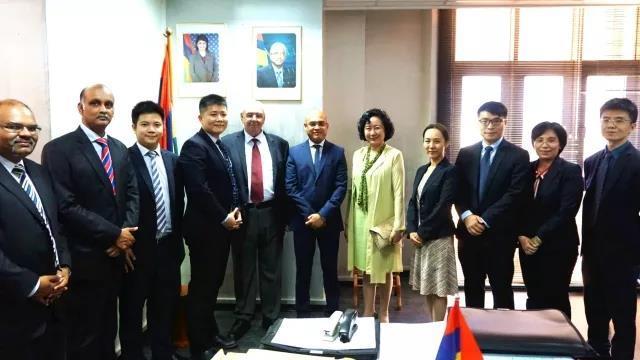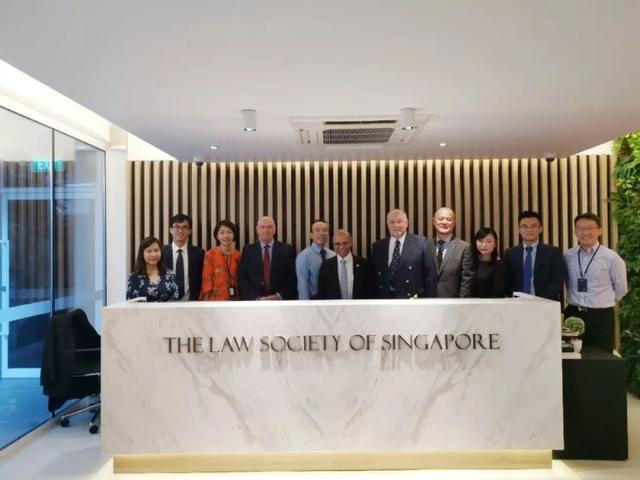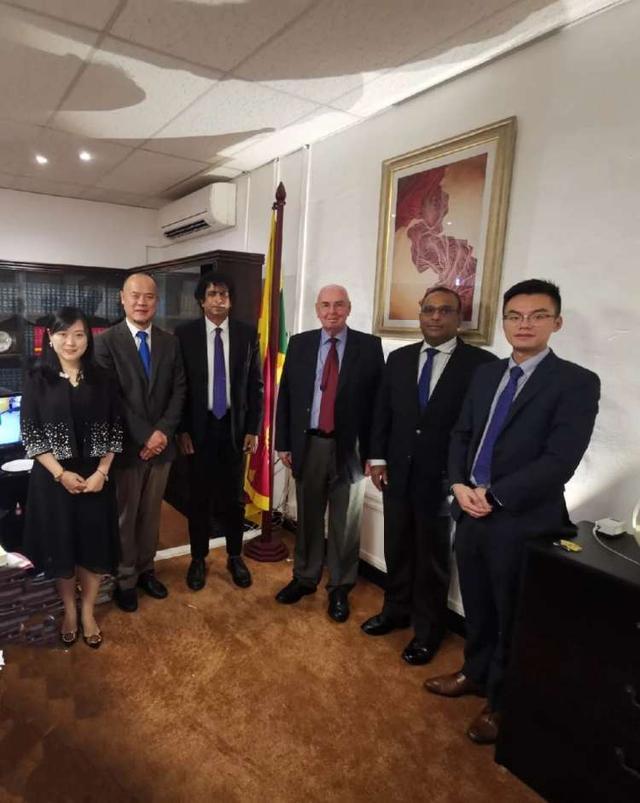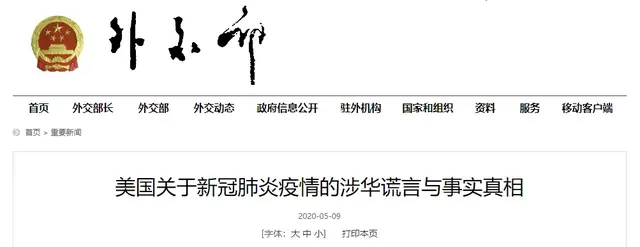我与特区国际仲裁的故事|彼得·马兰祖克:德国教授眼中的中国国际仲裁

彼得·马兰祖克彼得·马兰祖克教授(Prof. Dr. Peter Malanczuk),德国籍,深圳国际仲裁院理事会理事,最高人民法院国际商事专家委员会专家委员,德国海德堡大学(University of Heidelberg)学术委员会委员,香港大学客席法学教授。曾任荷兰阿姆斯特丹大学(University of Amsterdam)国际法首席教授、系主任,荷兰鹿特丹伊拉斯姆斯大学(Erasmus University Rotterdam)国际法首席教授、系主任,《荷兰国际法年刊》(the Netherlands Yearbook of Internationl Law)总编,香港城市大学法律学院院长、首席教授,北京大学国际法学院法学教授、跨国法律研究中心联合主任,深圳市政府国际化城市建设顾问委员会委员。

2013年11月, 马兰祖克理事作为深圳市政府国际化城市建设顾问委员会委员,在深圳国际化城市建设研讨会上演讲。(译文)引言我第一次听说深圳特区仲裁机构(现称深圳国际仲裁院,即“深国仲”,英文简称“SCIA”),是在2001年。那时,我刚从欧洲移居香港,担任香港城市大学法学院首席教授和院长,同时兼任香港城市大学“仲裁与争议解决硕士学位课程”主任。备课过程中,我惊讶地发现,深圳特区仲裁机构的创设时间竟早在1983年,比香港国际仲裁中心(HKIAC)还要早两年(1985年)。那时,深圳经济特区不过才成立了短短3年,当时香港尚未回归。有意思的是,在深圳设立国际仲裁机构的想法,也是出于当时香港地区工商界的考虑以及法律界关于粤港合作的建议。作为一家独立的仲裁机构,深国仲曾使用“中国国际经济贸易仲裁委员会华南分会”“中国国际经济贸易仲裁委员会深圳分会”的名称,立足深圳,与北京(中国国际经济贸易仲裁委员会)、上海(中国国际经济贸易仲裁委员会上海分会,现称上海国际仲裁中心,即上海国仲)开展三地合作,共同推广中国国际仲裁历史上最早的品牌。就像我总是乐于向学生指出的那样,深国仲在多个方面勇于创新,在中国仲裁事业的发展中敢为人先,很快便脱颖而出。例如,1984年,深国仲成为中国大陆首个聘请境外仲裁员的仲裁机构。1989年,深国仲的仲裁裁决按照1958年《承认及执行外国仲裁裁决公约》(即《纽约公约》)在香港地区得到执行,深国仲成为中国内地首个仲裁裁决在境外获得执行的仲裁机构。我与深国仲真正结缘是在2012年和2013年之间。2012年,我作为境外(德籍)仲裁员受邀加入深国仲仲裁员名册。不久后,2013年,我有幸进入深国仲的决策机构理事会担任第一届理事。2017年,我再次被深圳市政府聘任为深国仲理事,任期5年。此外,2020年,我成为华南(香港)国际仲裁院(即SCIA HK)的董事,华南(香港)国际仲裁院是深国仲在香港举办的独立运作的香港仲裁机构,位于香港国际金融中心。在深国仲工作的8年间,深国仲经历了重要的变革,其中包括2012年著名的“三地贸仲合作终止”事件。当年,在深圳的中国国际经济贸易仲裁委员会华南分会(即深国仲)、在上海的中国国际经济贸易仲裁委员会上海分会(即上海国仲)与在北京的中国国际经济贸易仲裁委员会终止合作关系。2015年7月,最高人民法院对“三地贸仲合作终止”产生的管辖权问题作出最终批复。在该批复中,最高人民法院肯定了深国仲的独立性。2017年12月,深国仲与深圳仲裁委员会合并,这是深国仲发展历程中的另一个里程碑事件。接下来,我想重点讲讲深国仲的理事会和仲裁规则。

2017年11月,马兰祖克理事(左五)和郭小慧理事(左七)共同率领深国仲代表团访问非洲,“路演”国际仲裁的深圳规则,图为与毛里求斯共和国司法部代理部长Callichurn先生(左六)交流中非仲裁合作。

2018年10月,马兰祖克理事(右五)率领深国仲代表团出席印度尼西亚“新亚洲”仲裁峰会,并作主题演讲,重点介绍中国深圳经济特区在投资仲裁方面的规则创新。深国仲理事会深国仲建立创新的法人治理结构,实行以理事会为核心的治理机制,这在中国属于首创。理事会作为决策主体,负责机构所有重要事项的决定。理事会还设有几个专门委员会。理事会不受行政干预,旨在强化深国仲的开放性和透明度。2012年11月24日,深圳市政府通过特区立法,发布《深圳国际仲裁院管理规定(试行)》(下称“《管理规定(试行)》”),为深国仲理事会在治理结构中的核心地位和独立性奠定了基础,确保深国仲仲裁的独立、公正。《管理规定(试行)》第3条规定:“深圳国际仲裁院是不以营利为目的的法定机构,作为事业单位法人独立运作。深圳国际仲裁院建立以理事会为核心的法人治理结构,实行决策、执行、监督有效制衡的治理机制。”《管理规定(试行)》与前海深港现代服务业合作区的建设相关。开发前海的目的是在珠江三角洲(即现在的“粤港澳大湾区”)的发展框架内,加强香港、深圳乃至广东之间的紧密合作,面向亚太及世界发展经济。《管理规定(试行)》也体现了国务院在2010年8月26日作出的《关于前海深港现代服务业合作区总体发展规划的批复》的要求。深国仲的法定注册地就在前海。《管理规定(试行)》第6条规定,理事中来自境外的人士不少于三分之一。香港是中国不可分割的一部分,在“一国两制”之下自有一套普通法法律体系,从这个角度而言,香港属于境外。深国仲的第一届理事会(2012年至2017年)共有12名理事,其中5名来自境外。第二届理事会(2017年至今)有13名理事,其中7名来自境外。理事会的国际化规定旨在加强其独立性,提高公开度和透明度,在决策过程中纳入有价值的外部意见。目前理事会中来自境外的人士包括:香港特别行政区律政司首任司长梁爱诗,香港资深大律师和香港证券及期货事务监察委员会前主席梁定邦,香港律师会前会长和香港国际仲裁中心前主席王桂壎,以及香港资深大律师、香港特别行政区政府律政司前司长、香港国际仲裁中心现任联席主席袁国强等。顺便提一句,《管理规定(试行)》其他条款的一些规定,如“来自境外的仲裁员不少于三分之一”,也进一步加强了深国仲的国际化水平。至于理事会,基于我的亲身经验,我认为理事会在实际运作中很好地体现了独立性和专业化。理事会会议由理事长主持得非常好。在院长的领导下,深国仲工作人员为每一次的理事会会议都作了充分准备,包括提前制备了中英双语文书材料。理事会审议也使用中英双语。

2019年6月,马兰祖克理事(右三)率领深国仲代表团访问西班牙,推介国际仲裁的深圳规则,推动“亚-欧-拉”国际仲裁合作。

2019年8月5日,梁定邦副理事长(左七)和马兰祖克理事(左四)共同率领深国仲代表团访问新加坡律师公会,与新加坡律师公会主席Gregory Vijayendran等共商国际仲裁合作。仲裁规则2013年加入理事会后,我担任理事会战略发展与规则修订委员会成员,并从2017年开始担任战略发展与规则修订委员会主席。我始终对深国仲的仲裁规则的创新和发展抱有浓厚兴趣,并尽力投入其中。《深圳国际仲裁院仲裁规则》自2012年开始实施,并先后于2016年和2019年进行了修订。根据相关立法和规则,深国仲的受案范围很广,包括国际案件、涉港澳台案件和境内案件。2016年,深国仲的受案范围进一步扩大,成为中国内地第一个对投资者与东道国争议拥有管辖权的仲裁机构。也就是说,深国仲可以受理投资者与东道国之间的争议,并按照《联合国国际贸易法委员会仲裁规则》对该等争议进行仲裁。不仅针对投资仲裁,深国仲也接受在国际商事争议仲裁中使用《联合国国际贸易法委员会仲裁规则》,并颁布了《深圳国际仲裁院关于适用〈联合国国际贸易法委员会仲裁规则〉的程序指引》(以下简称“《程序指引》”)。这是在中国内地适用《联合国国际贸易法委员会仲裁规则》的首个程序指引。深国仲的仲裁规则对“仲裁地”问题十分重视。仲裁地决定了仲裁适用的程序法律和仲裁裁决的籍属。根据《深圳国际仲裁院仲裁规则》,在一般的商事仲裁中,除非仲裁庭根据具体情况另有决定或者当事人另有约定,仲裁地为深国仲所在地(深圳前海)。而对于深国仲受理的投资者-东道国之间的投资仲裁案件,以及当事人约定适用《联合国国际贸易法委员会仲裁规则》的商事仲裁案件,当事人对仲裁地没有约定且仲裁庭对此未另做决定的,根据《程序指引》的创造性规定,默认仲裁地为香港。这意味着,香港特别行政区法院对仲裁地在香港的仲裁程序具有司法审查权,最终裁决应当视为是在香港特别行政区作出的裁决,在外国和中国内地可分别按照《纽约公约》和《最高人民法院关于内地与香港特别行政区相互执行仲裁裁决的安排》获得执行。深国仲的仲裁规则充分强调当事人意思自治。这符合《管理规定(试行)》中对于当事人权限的明确规定。《管理规定(试行)》第17条规定:“境内外当事人可以约定选择适用深圳国际仲裁院仲裁规则、境内外其他仲裁机构的仲裁规则或者联合国国际贸易法委员会仲裁规则,可以约定对深圳国际仲裁院仲裁规则有关内容进行变更,也可以约定适用法律、组庭方式、庭审方式、证据规则、仲裁语言、开庭地或者仲裁地,但其约定应当能够实施,且不得与仲裁地强制性法律规定相抵触。”深国仲的仲裁规则持续创新,完善高效的争议解决机制。2012年《深圳国际仲裁院仲裁规则》已经对简易程序、多份合同的单次仲裁、追加当事人、第三方、合并仲裁和临时措施等进行了规定。2016年修订的《深圳国际仲裁院仲裁规则》除增加投资仲裁相关规定外,还增加了“诚信合作”(第6条),并采纳我的建议,规定了指定“紧急仲裁员”的程序(第24条)。2019年修订的《深圳国际仲裁院仲裁规则》进一步增加了多种创新举措,其中包括率先在中国内地仲裁规则中引入选择性复裁程序,并制定了相应的程序指引。鉴于深国仲受理的案件具有多元化性质,除《深圳国际仲裁院仲裁规则》《深圳国际仲裁院关于适用〈联合国国际贸易法委员会仲裁规则〉的程序指引》《深圳国际仲裁院选择性复裁程序指引》外,理事会还针对金融借款争议、海事和物流仲裁以及网络仲裁制定了专门的仲裁规则。仲裁是深国仲争议解决业务的主要支柱。基于此,深国仲秉承中国传统文化,近年来逐步发展形成了“和谐的多元化争议解决机制”(HDR),把调解与仲裁有机结合了起来,也创建了促进谈判机制。在调解方面,深国仲2007年成立中国国际高新技术成果交易会权益保障中心,并开始在广交会知识产权与贸易纠纷投诉接待站提供现场调解服务;2008年成立深圳国际仲裁院调解中心;2013年成立深圳证券期货业纠纷调解中心以及粤港澳仲裁调解联盟。在谈判促进方面,深国仲创建的谈判促进中心协助当事人通过谈判解决争议,并鼓励当事人将谈判结果提交仲裁院作出可执行的仲裁裁决。

2019年8月7日,马培德教授(左四)率领深国仲代表团参加《联合国关于调解所产生的国际和解协议公约》(即《新加坡公约》)签署仪式,与中国政府代表商务部部长助理李成钢先生(左三)等合影。

2019年8月9日,马培德教授(左二)率领深国仲代表团拜访斯里兰卡外交部长提拉克·马拉帕纳(Tilak Marapana)先生 (左三),推广国际仲裁的深圳规则。

2019年8月9日,马培德教授(左四)率领深国仲代表团回访斯里兰卡总检察长达普拉·里维拉(Dappula De Livera)先生(左三)。结语在深国仲担任理事的工作经历令我深受鼓舞,并感受到满满的正能量。深国仲位于深圳证券交易所的总部的办公室,拥有世界一流的设施,提供高度专业化的争议解决服务。深国仲的国际化(例如理事会和仲裁员的国际化)发展取得了巨大成功,并且随着其全球联络的加强,深国仲的国际化仍在不断深化。深国仲的国际化发展与深圳的国际化政策携手共进,而我曾有幸担任深圳市政府国际化城市建设顾问委员会委员(2013-2018),为深圳的国际化贡献了绵薄之力。深国仲在开放合作方面从未止步,我作为外籍理事,曾受委派为领队(或联合领队)率团出访毛里求斯、南非、西班牙、新加坡和斯里兰卡讨论国际仲裁合作,推广国际仲裁的深圳规则。深国仲仲裁规则的现代化给人留下了深刻印象。中国《仲裁法》颁布于1994年,距今已逾25年,其中一些规定亟待修订和更新。而在此背景下,深国仲借鉴国际标准持续创新规则,一直在促进中国仲裁事业的发展。这反映于其受理案件数量的迅速增加,以及受理案件类型的多元化:金融纠纷、货物销售纠纷、房地产建筑工程纠纷、公司纠纷、服务合同纠纷和投资纠纷等。深国仲立足珠江三角洲地区,持续创新和发展仲裁和调解,极大地推动了依法治国,并将在粤港澳大湾区和“一带一路”的背景下继续发挥重要作用。最高人民法院将深国仲列为华南地区唯一一家首批纳入“一站式”国际商事纠纷多元化解决机制的国际商事仲裁及调解机构,体现了对深国仲重要作用的认可。凡此种种,我可以说深国仲的璀璨未来值得国内外业界期待。(李雄风 迟文卉 翻译)

2017年6月29日,深国仲第二届理事会第一次会议,全体理事合影,左起:刘晓春、郭晓文、马兰祖克、梁定邦、郭小慧、梁爱诗、沈四宝、赵宏、王桂壎、王振民、李伯乐(João Ribeiro)、胡建农、黄亚英。

2019年2月21日,深圳市委常委(时任深圳市副市长)黄敏同志会见深国仲理事会部分理事,左起:郭晓文、王桂壎、刘春华、袁国强、沈四宝、黄敏、马兰祖克、刘晓春、郭小慧、黄亚英。原文如下:Prof. Dr. Peter MalanczukIntroductionThe first time I heard about the arbitral institution in Shenzhen that was later called SCIA (Shenzhen Court of International Arbitration) was after 2001 when I had moved to Hong Kong from Europe and became Chair Professor and Dean of the School of Law at City University of Hong Kong. At City University, I also served as Director of the well-established MA Programme in Arbitration and Dispute Resolution. In the preparation of my courses I was surprised to learn that this arbitration body in South China was already established in 1983, only three years after the inauguration of the Shenzhen Special Economic Zone ("SEZ"), but still two years ahead of the Hong Kong International Arbitration Centre (HKIAC) which was formed in 1985 when Hong Kong was still under British rule. Moreover, it was interesting to note that the idea to set up the arbitration commission across the border in Shenzhen was promoted by Hong Kong business interests and arose from the emerging Guangdong-Hong Kong legal cooperation.While being an independent arbitration commission, SCIA originally called itself "CIETAC South China" or "CIETAC Shenzhen". Basing itself in Shenzhen, the commission was to promote the oldest arbitration brand in China through a trilateral partnership with Beijing (i.e. the present CIETAC Beijing) and Shanghai (i.e. CIETAC Shanghai, the present SHIAC). But, as I was pleased to explain to my students, the CIETAC South China or Shenzhen (i.e. the former SCIA) also soon distinguished itself by being innovative in many respects and taking a lead in the development of arbitration in China. For example, it was the first arbitration institution on the Chinese mainland to include foreign professionals in its panel of arbitrators in 1984. It was also the first institution on the Chinese mainland of which an award was enforced under the 1958 New York Convention in 1989 (across the border in Hong Kong).My real affiliation with SCIA, however, commenced in 2012/2013. In 2012, I was invited to join the SCIA Panel of Arbitrators as one of the foreign arbitrators on the list (in my case from Germany). Not long thereafter, in 2013, I was honoured with my appointment to the Council, the governing body of SCIA. I was reappointed to the SCIA Council in 2017 for a term of five years. Furthermore, in 2020 I joined the Board of Directors of South China International Arbitration Center (Hong Kong) (the "SCIA HK"), a new Hong Kong-registered affiliate of SCIA based at the International Finance Centre (IFC) in Hong Kong.During the eight years I have so far spent working with SCIA, it has gone through important changes, including the famous so-called "CIETAC split" in 2012, when former CIETAC South China (i.e. the present SCIA) and former CIETAC Shanghai (i.e. the present SHIAC) jointly declared the termination of the trilateral partnership with CIETAC Beijing. The jurisdictional issues arising from the "CIETAC split" were finally settled by the Supreme People's Court in July 2015. The Court confirmed the legality and independence of SCIA in this decision. Another milestone was the merger of SCIA with the Shenzhen Arbitration Commission that was announced in December 2017. In the following brief comments, I would like to focus on two main aspects of my experience with SCIA, namely the SCIA Council and the SCIA Rules.The SCIA CouncilThe innovative corporate governance structure of SCIA is focused upon the Council as the main governing body and, as such, it is unique in China. The council, supported by a structure of special committees, is responsible for making all important decisions. It is independent from the government and designed to enhance openness and transparency.The central and independent role of the Council is based upon special local legislation enacted by the Shenzhen Municipal Government in 2012 (Regulations on the Shenzhen Court of International Arbitration (for trial implementation), 24 November 2012) to ensure the independence, impartiality and integrity of SCIA arbitration. Art. 3 of the 2012 Regulations states:"SCIA is a non-profit statutory body operating as an independent public institution. SCIA establishes a corporate governance system centered on the Council adopting effective mechanisms in decision-making, implementation and supervision."These Regulations are related to the Qianhai Project (the "Qianhai Shenzhen-Hong Kong Modern Service Industry Cooperation Zone"),the purpose of which is to engage Hong Kong and Shenzhen ,or even Guangdong within the broader framework of the Pearl Delta Area (and now the "Greater Bay" blueprint) into close cooperation to develop a strong service-orientated economy for the Asia-Pacific and beyond. They also reflect the approval given by the PRC State Council of the General Plan concerning the Qianhai Project of 26 August 2010. The statutory seat of SCIA is in Qianhai.According to Art. 6 of the above Regulations, at least one third of the council members must come from outside jurisdictions. As Hong Kong has its own legal common-law based legal system - although it remains an integral part of China under the "one country, two systems" principle, it qualifies as an outside jurisdiction in this regard. While the First SCIA Council (2012-2017) had five members out of 12 from outside jurisdictions, the Second SCIA Council (since 2017) includes seven members out of 13 from overseas jurisdictions.The purpose of this internationalization of the Council is to strengthen its independence, to promote openness and transparency, and to integrate qualified outside advice into its decision-making process. For example, SCIA Council members from outside the Chinese mainland include Ms. Elsie Leung, the former Secretary for Justice of Hong Kong; Mr. Anthony Neoh, Senior Counsel in Hong Kong and former Chairman of the Hong Kong Securities and Futures Commission; Mr. Huen Wong, who is a former President of the Law Society of Hong Kong and a former Chairman of the Hong Kong International Arbitration Centre (HKIAC); and Mr. Rimsky Yuen, Senior Counsel in Hong Kong, former Secretary for Justice of Hong Kong, and the present Co-chair of the HKIAC.It may be noted in this connection, that the internationalization of SCIA is further enhanced by the additional statutory requirement in the 2012 Regulations that"at least one third of the panel arbitrators must be appointed from outside jurisdictions."In my experience, in practice the Council has operated independently and professionally. Council meetings have been competently presided over by Chairman Shen Sibao (and his predecessor Chairman Guo Xiaowen). They are well-prepared and documented in both Chinese and English by SCIA staff under the able guidance of SCIA President Liu Xiaochun. Both languages are also used in Council deliberations.The SCIA RulesAppointed as member of the SCIA Council's Strategic Development and Rules Making Committee after joining the Council in 2013 and from 2017 onwards as Chairman of the Strategy and Rules Making Committee, I have always taken a special interest in the development of SCIA's Arbitration Rules. The SCIA Arbitration Rules that had been adopted in 2012 were revised in 2016 and have been updated again most recently in 2019.Under the relevant legislation and the Rules, SCIA's jurisdiction is quite broad. It covers international cases, Hong Kong, Macao and Taiwan-related cases, as well as domestic cases. As the first arbitration body on the Chinese mainland, SCIA's jurisdiction was extended in 2016 to further include investor-state disputes. Thus, SCIA may hear investor-state disputes and administer arbitrations under the UNCITRAL Arbitration Rules on the mainland. SCIA goes beyond investment arbitration and accepts the use of the UNCITRAL Arbitration Rules for international commercial disputes as well. The SCIA Guidelines for the Administration of Arbitration under the UNCITRAL Arbitration Rules (the "Guidelines") constitute the first guidelines to apply UNCITRAL Arbitration Rules on the mainland.SCIA arbitration rules attach great importance to the seat of arbitration as the latter is decisive for the governing procedural law and the nationality of the award. According to SCIA Arbitration Rules, in normal commercial arbitration cases, if there is no agreement of the parties, the seat of arbitration is the domicile of SCIA (Qianhai/Shenzhen), unless arbitral tribunal decides otherwise depending on the circumstances. In investor-state investment arbitration disputes accepted by the SCIA or commercial arbitration disputes applying UNCITRAL Arbitration Rules as agreed by parties, if the parties fail to agree on the seat and the tribunal does not decide otherwise, the default seat of arbitration is Hong Kong according to the innovative provision of the Guidelines. This implies that the courts of Hong Kong Special Administrative Region (the "Hong Kong SAR") control the procedure and that the final award is considered an award made in Hong Kong SAR, enforceable under the relevant agreements applicable to the Hong Kong SAR, including the 1958 New York Convention and the relevant Agreement with the Chinese mainland.The SCIA Rules put a strong emphasis on party autonomy. This complies with a clear mandate laid down in the local legislation mentioned earlier. Art. 17 of the 2012 Regulations stipulates:"The foreign parties may agree on the application of SCIA arbitration rules or arbitration rules of other arbitration institutions at home and abroad, or the Arbitration Rules of the United Nations Commission on International Trade Law, and they may agree on a modification of SCIA arbitration rules as well as the applicable law, the formation of the tribunal, the conduct of the hearing, the rules of evidence, the language of arbitration and the place of hearing or arbitration, provided such agreement can be implemented and is not in conflict with a mandatory provision of the law as it applies to the arbitration proceedings."SCIA Rules further provide for efficient case dispute resolution mechanisms, backed up by a dedicated administrative structure of case management and allocation of staff and resources. Already the 2012 version of the Rules incorporated provisions on summary procedure, multiple contracts, joinder of additional parties, third parties, consolidation, and interim measures. The 2016 Rules, apart from adding investor-state dispute settlement, further included a duty of "bona fide cooperation" (Art. 6) and - at my suggestion - a new procedure for appointing emergency arbitrators (Art. 24). Among the innovations - again "a first on the Chinese mainland" - introduced by the latest 2019 revision of the SCIA Rules is an optional appellate arbitration procedure, supported by special guidelines.Given the diverse nature of cases falling with the jurisdiction of the SCIA, in addition to the SCIA Arbitration Rules and the Guidelines on UNCITRAL arbitration and optional appellate arbitration procedures, the Council has further adopted special sets of rules for financial loans disputes; maritime and logistics arbitration; and online arbitration.Arbitration as described above is a central pillar of the SCIA dispute resolution universe. But, building upon Chinese traditions, it forms part of a broader framework which has been described as "Diversified Harmonious Dispute Resolution". This circle combines mediation and arbitration, on the one hand, and the facilitation of negotiation with arbitration, on the other hand. As regards mediation, it includes the Canton Fair Complaint Station for IPR and Trade Disputes,and the China Hi-Tech Fair Centre for Dispute Resolution Service, both established in 2007; the SCIA Mediation Centre, established in 2008; the Shenzhen Securities and Futures Dispute Resolution Centre, and the Guangdong, Hong Kong & Macao Arbitration & Mediation Alliance, formed in 2013. As far as negotiation is concerned, SCIA's Negotiation Facilitation Centre assists parties in settling disputes through negotiations and offers the possibility of incorporating settlements into an enforceable arbitral award.ConclusionMy experience in working with SCIA has been stimulating and positive. SCIA provides highly professional dispute resolution services with world class facilities located in the Shenzhen Stock Exchange Building.SCIA's internationalization policy (e.g. in the composition of the Council and the panels of arbitrators) has been successful and is further intensifying with more and more global contacts. It has gone hand in hand with Shenzhen's internationalization policy, to which I was honoured to make a small contribution as a member of the Shenzhen Municipal Government's Advisory Committee on the Internationalization of Shenzhen (2013-2018). SCIA has also demonstrated its openness to internationalization by kindly appointing me as a foreign Council member to lead (or co-lead) official SCIA delegations to Mauritius, South Africa, Spain, Singapore and Sri Lanka to discuss cooperation.The modernization of SCIA's Rules has been impressive, especially if one takes into consideration that the governing 1994 Arbitration Act in China is now a quarter of a century old and urgently needs some updating.Nevertheless, SCIA has made good efforts to follow international standards and it has often taken the lead in the development of arbitration in China. This is reflected in the increasing case load of SCIA which includes financial disputes, sale of goods disputes, real estate and construction disputes, corporate disputes, service contract disputes and investment and other disputes.SCIA has greatly contributed to the rule of law through arbitration and mediation in the Pearl Delta. It will continue to play a decisive role in the context of building the Greater Bay Area and China's Belt and Road Initiative. SCIA's recognition by the China International Commercial Court of the Supreme People's Court as its partner in South China (in the First Group of International Commercial Arbitration and Mediation Institutions in the "One-stop" Diversified International Commercial Dispute Resolution Mechanism) is but a well-deserved confirmation of this important role. All that leads me to conclude that both the domestic and international arbitration communities expect a bright future for SCIA.来源:深圳商报





















评论